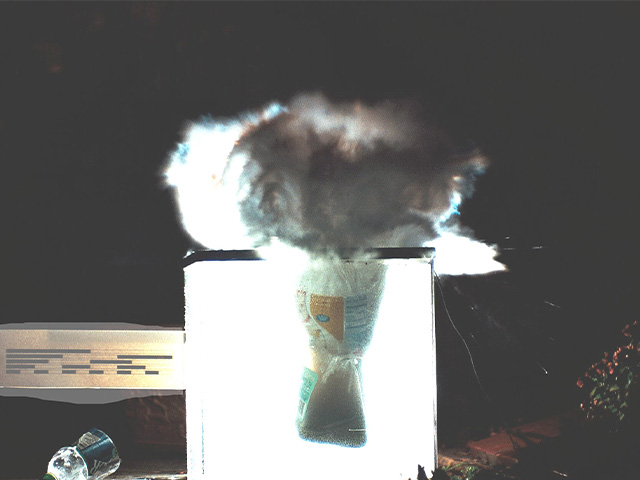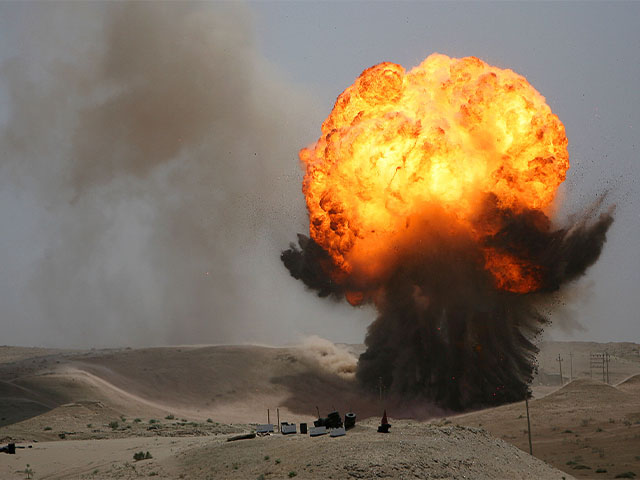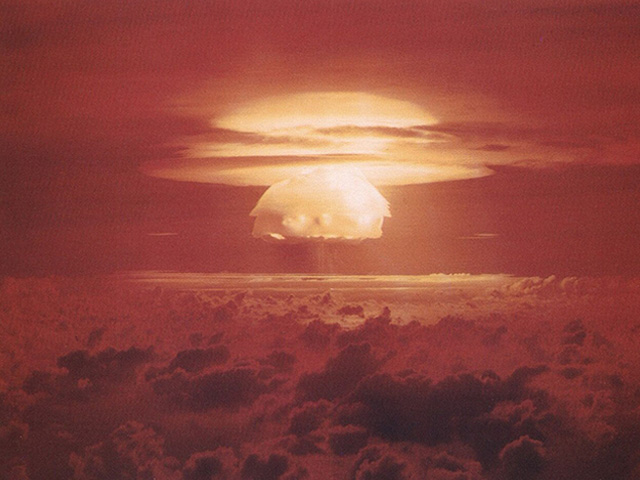Most information is obtained from Wikipedia. Images are linked to the original source.
An explosion is considered as a type of disaster.
The definition of an explosion is a rapid expansion of energy usually with a large amount of
heat and light with the release of high pressure gases.
Explosive materials are produced in numerous physical forms for their use in mining, engineering, or military applications.
Depending on the type of bomb or material exploding it can also sometimes be radioactive.
The three main fundamental types of explosions include Mechanical, Chemical, and Nuclear.
The image shown on the left is a Mechanical explosion. A Mechanical explosion is an explosion that requires a reaction that is neither Chemical or Nuclear. The meaning of Mechanical explosion is when the pressure of gas within a container is greater than the container's tensile strength(the amount of pressure a container or material can handle) causing the container and it's contents to explode outwards with a shock wave such as a boiler overheating or the dry ice bomb shown to the left. Mechanical bombs often cannot be classified as bombs however they can still cause casualties or damage.
The image shown to the right is a image of the low explosive known as fireworks during australia day 2013 in Perth. Low explosives typically consist of an oxidising salt, such as Potassium Nitrate(Saltpeter), and since low explosives are not particularly powerful they usually need to be used in large quantities or in a high pressure container in order to be used as a bomb. Chemical explosives are considered to be normal explosives since chemical explosive means it requires combustion or a chemical reaction. Low explosives also include gunpowder or fireworks which cause small explosions.
The image to the left is of a high explosive disposal detonation in Iraq. High explosives use the process known as detonation in order to rapidly go from an initialy high energy molecule to a very low energy molecule. Detonation is distinct from deflagration in that the chemical reaction propegates faster than the speed of sound(often several times faster) creating an intense shock wave. Therefore the pressure of an explosion created through detonation is not significantly increased through confinement as detonation occurs too quickly. When detonating a high explosive the main damage is from the supersonic shock wave in the surrounding area. A type of high explosive is plastic explosive or putty bomb which are used for demolition purposes by engineers or combat engineers. Some explosives have a casing for the purpose of fragmentation which improves efficiency while it propells the fragments around a much wider area.
The image to the right is of a Thermobaric bomb explosion. The Thermobaric bomb, also known as aerosol bomb or vacuum bomb is a type of chemical explosive that utilizes the surrounding oxygen to generate an intense, high-temperature explosion. One of the most well known thermobaric explosives is the Fuel-Air Bomb. Thermobaric weapons are almost 100% fuel and as a result are significantly more energetic than conventional explosives of similar weight. The fuel is often elemental rather than a mix of multiple metals.
To the left is an image of an explosion from a Atomic bomb.
The final fundamental type of explosive is nuclear.
The image above is the Trinity test of the Manhattan project which was the first detonation of a nuclear weapon.
Nuclear bombs are separated into two types: The first type which is shown above is a nuclear bomb that utilises nuclear fission known as the atomic bomb or A-bomb.
Nuclear fission is a reaction in which the nucleus of an atom splits into two or more smaller nuclei which often produce gamma protons and produce a large amount of energy
even by the standards of radioactive decay.
The most commonly used fissile materials for nuclear weapons applications have been uranium-235 and plutonium-239.
Some slightly less commonly used fissile materials have been uranium-233 and neptunium-237.





